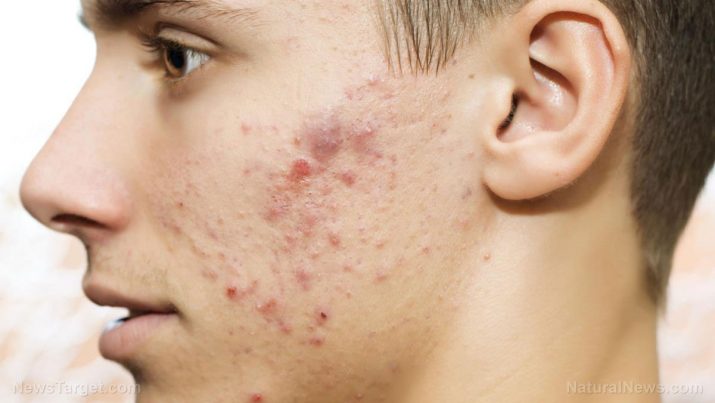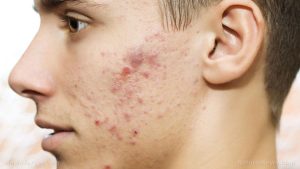
Acne — causes, side effects and treatments at NaturalPedia.com
Wednesday, December 20, 2017 by Michelle Simmons
http://www.naturalpedia.com/acne-causes-side-effects-and-treatments-at-naturalpedia-com.html

Acne is a chronic, inflammatory skin condition that causes spots and pimples, particularly on the face, shoulders, back, neck, chest, and upper arms. Acne have different types, which include whiteheads, blackheads, pimples, cysts, and nodules. It is the most common skin condition in the United States, and affects around 50 million Americans every year. This condition can occur at any age, but it often occurs during puberty, the stage when the sebaceous glands activate. Although it is not dangerous, it can leave scars on the skin. The exact cause of acne remains unknown, but hormone changes and pregnancy may play a role. Chocolate, greasy foods, and dirty skin may cause acne, while stress can worsen the condition.

Known side effects of acne
Acne is not a serious medical condition. However, it can cause some form of lesion on the skin, and red, inflamed, and raised bumps. Serious forms of inflamed acne can also cause skin scarring and pigmentation. It causes bumps or bumpiness across the skin’s surface, or an uneven skin texture.
Body systems harmed by acne
Acne adversely affects the integumentary system.
Food items or nutrients that may prevent acne
There are several food items that may prevent acne. Consuming low-glycemic foods made of complex carbohydrates may lower the risk of developing acne. Complex carbohydrates can be found in whole grains, legumes, and fresh fruits and vegetables. Other foods that are skin-friendly include carrots, apricots, sweet potatoes, spinach, tomatoes, blueberries, brown rice, quinoa, turkey, pumpkin seeds, beans, peas, lentils, salmon, and nuts. Nutrients that are beneficial for the skin include zinc, vitamins A and E, and antioxidants.
Treatments, management plans for acne
Acne can be treated with the use of natural ingredients, such as tea tree oil, which has natural properties that fight against inflammation. Mix a few drops of tea tree oil with 20 to 40 drops of witch hazel, then use a cotton swab to apply. This can be done for one to two times a day only because using it more could make the skin dry and worsen the acne. Another remedy is green tea as it has antibacterial and antioxidant compounds that can help prevent acne. Use a cooled cup of green tea as a face wash or put the tea bag over the affected area.
Honey can also be used to treat acne. It contains antibiotic properties that can help improve acne. Apply one teaspoon of honey to the affected areas. Another way to use honey is to mix half a cup of it with one cup of plain oatmeal, then leave it on the affected area for 30 minutes. Mint can also be used to treat acne because it can help remove pore-clogging oil. Mix two tablespoons of finely chopped fresh mint together with two tablespoons each of plain yogurt and oatmeal, and leave it on the face for 10 minutes, then rinse off with water.
Another natural remedy for acne is echinacea, which contains antibacterial and anti-inflammatory properties. Chamomile can also help lessen inflammation from acne. It can be blended and mixed with water to form a paste, then applied to the affected area. Aloe, which has burn-relieving effects, can enhance healing, prevent inflammation, and reduce scarring. Lemon can also help treat acne as it acts as an exfoliant, skin lightener, and disinfectant, reducing the appearance of scar and preventing the formation of new pimples. Other natural remedies for acne include apple cider vinegar and acidic foods.
Where to learn more
- Acne’s location on your body could reveal specific health issues
- Is acne caused by a ‘bad’ strain of bacteria?
- Natural remedies for acne
- Natural acne treatments explained: Here’s what works (and why)
- For healthy, acne-free skin, just say no to fried foods
Summary
Acne can be prevented or treated with the help of natural ingredients, such as tea tree oil, green tea, honey, mint, echinacea, chamomile, aloe, lemon, apple cider vinegar, and acidic foods.
Acne prevention support the integumentary system.
Sources include:
Tagged Under: Tags: acne





